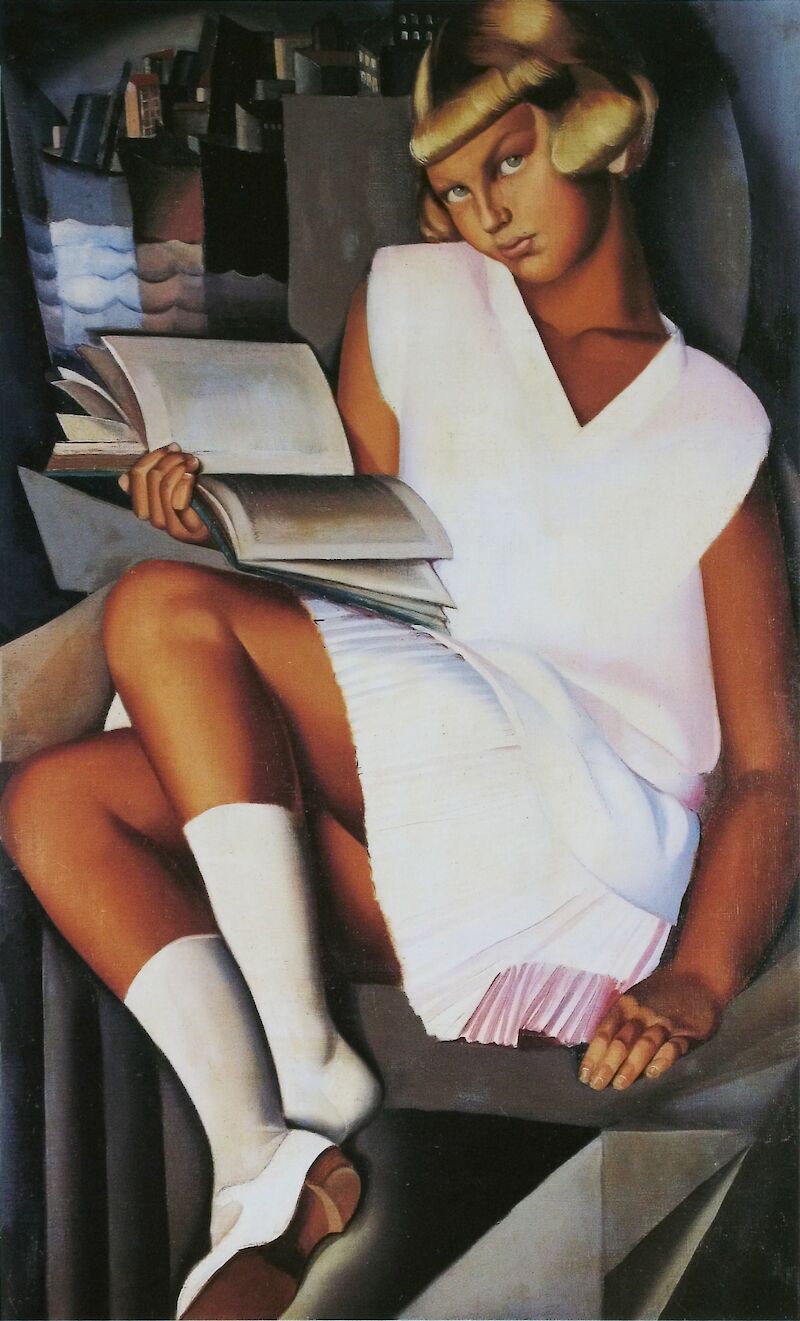


“Kizette, you sit for your mother because some day she will be very famous and you will be in a museum,” her grandmother told her. Maria Krystyna Łempicka, little Kizette, only saw her mother a few weeks a year, and when she did, it was often to sit for portraits. And sure enough, Grandmother was right.
Kizette’s mother was Tamara de Lempicka, inveterate socialite and one of the rising stars of the Art Deco moment. Tamara joined the Montparnasse art school Académie de la Grande Chaumière not long after Kizette’s birth, learning painting from the symbolistMaurice Denis, the cubist André Lhote, and developing a stylish fusion of neoclassical, monumental cubism. Tamara came from money, was beautiful, and her signature style made her patrons look rich and beautiful too. While Tamara’s first paintings were of Kizette and her neighbor, after her work was ‘discovered’ by journalists from Harper’s Bazaar during the Exhibition of Modern Decorative and Industrial Arts, Tamara went global.
While Tamara traveled to show work in Milan, France and Poland, dating a string of counts, marquises, and poets along the way, Kizette was in boarding school or staying with her grandmother. Most of Tamara’s friends didn't know she had a child, and during her rare visits home she claimed Kizette was her younger sister.
Tamara’s brief visits were intense for Kizette. Her mother was a domineering figure, in later years Kizette described her saying “she was strict with others but she was also strict with herself. One was not allowed to be tired, one was not allowed to put off for tomorrow.” Days were packed with strident walks, memory quizzes, and sitting for portraits, which was agonizing for the young girl but absolutely non-negotiable. It was a hard-edged relationship, but Kizette adapted. “She had her life, and I had mine ... I thought that was how everyone lived.”
...
Kizette in Pink was painted in 1926, when Kizette was ten years old. It’s just over life size, and perfectly exemplifies Tamara’s signature style. Aggressive diagonal composition, figure filling the frame, a titling futurist city in the background and a foreground reduced to abstraction. Tamara’s figures always recline on concrete slabs—pedestals to support the sculpted architecture of the body.
Tamara’s style is refined to a fault, but this is her daughter, and the mother’s delicate brush captures a lot of expression behind the white Mary Janes and preppy tennis outfit. Kizette’s tucked chin and upward gaze are a withdrawn, almost suspicious posture. The subtle pout leans disinterested, the arched eyebrow defiant. Kizette regards the viewer like an alien, with equal parts curiosity and guarded self-defense. Whatever she’s thinking is buried deep.
...
Got questions, comments or corrections about Kizette in Pink? Join the conversation in our Discord, and if you enjoy content like this, consider becoming a member for exclusive essays, downloadables, and discounts in the Obelisk Store.
